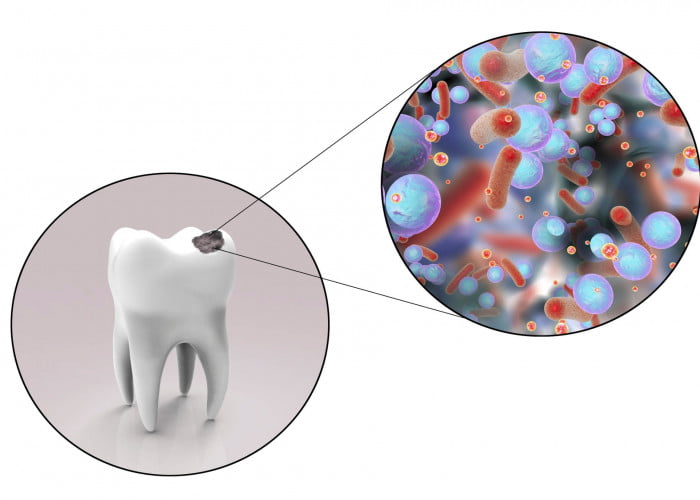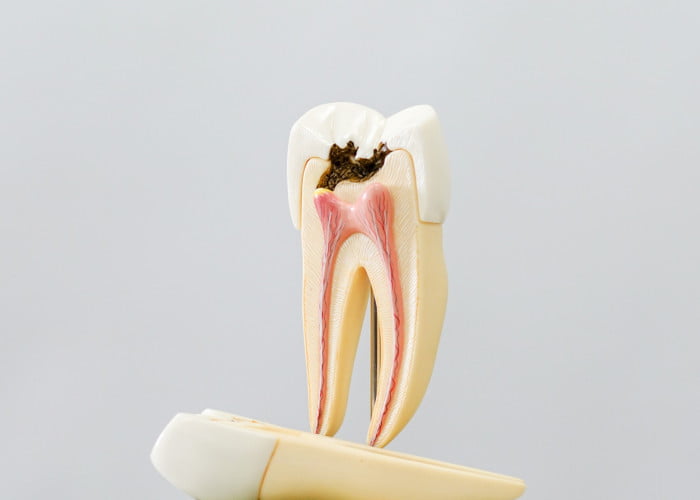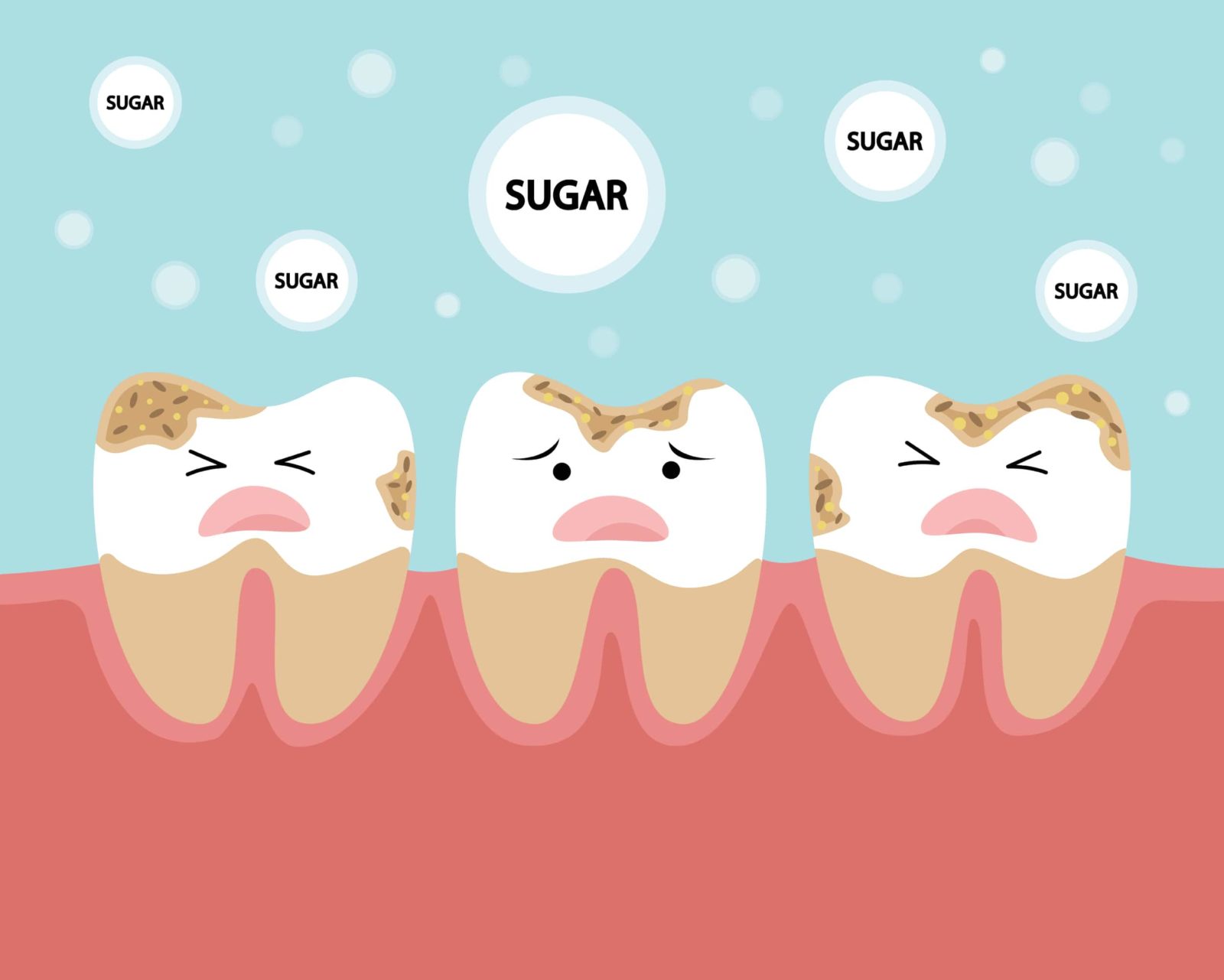Many people wonder about the timeframe for the formation of dental plaque and ask themselves, “How long does it take for cavities to form?” Understanding the development of dental plaque requires taking time into account as an important factor. It’s important to note that plaque doesn’t form instantly; rather, it depends on various factors. Typically, it takes several months to a year for plaque to accumulate to a significant extent, posing a potential problem. However, this timeframe can vary based on factors such as diet, oral care practices, and individual characteristics.
What causes cavities?
Cavities are a common dental problem that can lead to pain, discomfort, and the need for costly dental treatments. Understanding what causes cavities is essential for maintaining good oral health.
Cavities are primarily caused by bacteria in the mouth that produce acid when you consume sugary or starchy foods and drinks. This acid can erode your tooth enamel, leading to the formation of a cavity. Poor oral hygiene, such as infrequent brushing and flossing, can also contribute to the development of cavities.
How does a cavity form?
Understanding how a cavity forms is essential for maintaining good oral health. Cavities, also known as dental caries, develop as a result of a complex process influenced by various factors.
The formation of a cavity begins with the presence of plaque on the teeth. Plaque is a sticky film that forms when bacteria in the mouth interact with sugars and starches from food. If plaque is not regularly removed through proper oral hygiene practices, it can release acids that attack the tooth enamel.
Over time, these acids erode the enamel, creating small openings or holes in the tooth surface. These openings are known as cavities. Once a cavity forms, it provides a perfect environment for further decay. Bacteria and food particles can accumulate within the cavity, leading to the progression of tooth decay.
See more: Wisdom tooth cavities: Identifying the signs and symptoms
Demineralization
The first stage of cavity formation is demineralization. This occurs when the enamel on your tooth loses minerals, such as calcium and phosphate, due to exposure to acids from bacteria in your mouth or from consuming sugary or acidic foods and drinks. When the enamel is demineralized, it becomes weaker and more prone to damage, such as cavities.
To prevent demineralization, it’s important to practice good oral hygiene habits, such as brushing with fluoride toothpaste twice a day, flossing daily, and using mouthwash. Eating a balanced diet that’s low in sugar and acid can also help prevent demineralization.
-

Demineralization
Enamel Decay
This occurs when the demineralized enamel begins to break down and form a small hole or pit on the surface of your tooth. At this stage, the cavity is still relatively small and may not cause any pain or discomfort. However, it’s important to catch cavities at this stage to prevent them from becoming larger and more serious. Regular dental checkups and cleanings can help catch cavities early and prevent further damage to your teeth.
-

Enamel Decay
Dentin Decay
If left untreated, the decay progresses beyond the enamel and reaches the dentin. Dentin is a softer layer underneath the enamel. Once the decay reaches the dentin, it progresses more rapidly. The dentin’s porous structure allows the bacteria and acid to spread, leading to increased tooth sensitivity and discomfort.
-

Dentin Decay
Pulp Decay
If the cavity continues to advance, it can reach the pulp, which contains nerves, blood vessels, and connective tissue. Pulp decay can be extremely painful and result in inflammation. In this stage, immediate dental intervention is necessary to prevent further complications and save the tooth.
-

Pulp Decay
Abscess
In severe cases, when the infection reaches the root of the tooth, an abscess may form. An abscess is a pocket of pus that develops as a result of the body’s immune response to the infection. It can cause severe pain, swelling, and potentially affect overall health if left untreated.
-

Abscess
How long does it take for a cavity to form?
The time it takes for a cavity to form can vary depending on several factors. Cavities develop as a result of the continuous breakdown of tooth enamel caused by acid attacks from bacteria in the mouth.
On average, it can take several months to a year for a cavity to form. However, the timeline can be influenced by various factors such as oral hygiene practices, diet, saliva flow, and individual susceptibility to tooth decay.
Read more: Do whitening strips work?
Are there any symptoms you might notice?
Certain symptoms may indicate the presence of tooth decay. Initially, during the early stages, you might not observe any noticeable symptoms. However, as the cavity progresses and penetrates the deeper layers of the tooth, you may start experiencing the following indications:
- Sensitive or painful teeth, especially when eating or drinking hot, cold, or sweet foods and drinks.
- Visible holes or dents in the surface of your teeth.
- Discoloration or dark spots on your teeth.
- An unpleasant taste in the mouth or the occurrence of bad breath.
- Swelling or redness in the gums around the affected tooth.
Can You Reverse Tooth Decay?
Tooth decay is a common dental problem that occurs when tooth enamel is eaten away by acids produced by bacteria in the mouth. While decay cannot be reversed once it has progressed to the point of cavity formation, it is possible to prevent further damage and potentially even reverse the initial stage of caries. Some ways to promote early reversal of tooth decay include:
Tips to prevent cavities
To prevent cavities, follow these essential tips:
- Brush twice daily: Brushing with fluoride toothpaste removes plaque and bacteria.
- Floss daily: Clean between teeth and along the gumline to remove plaque buildup.
- Limit sugary and acidic foods/drinks: Reduce consumption to minimize cavity risk.
- Choose tooth-friendly snacks: Opt for fruits, veggies, cheese, or nuts instead.
- Drink water: Stay hydrated and rinse away food particles and acids.
- Use fluoride toothpaste and mouthwash: Strengthen enamel and prevent cavities.
- Consider dental sealants: Protect teeth with a thin coating applied by a dentist.
- Visit the dentist regularly: Get check-ups, cleanings, and personalized advice.
Exams and Dental Cleanings Near Irving
In need of dental exams and cleanings near Irving? Our dental practice offers comprehensive dental care, including thorough examinations, professional cleanings, and preventive treatments to keep your teeth healthy and cavity-free.
Conclusion
The formation of cavities is a complex process that can be influenced by a variety of factors. While it is difficult to predict exactly how long it takes for a cavity to form, maintaining good oral hygiene habits such as brushing twice a day and flossing daily can help prevent their development. Additionally, regular dental check-ups can catch cavities early on and prevent them from becoming more serious issues.



